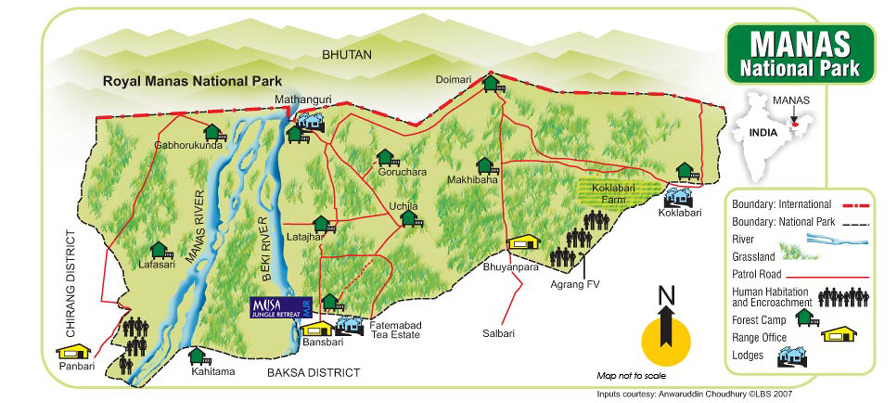Nil to 48 in 20 years; Assam’s Manas sees amazing rise in tiger numbers
About Manas National Park

- Manas is located in Assam state bordering Bhutan.
- Manas acquired the status of a Biosphere reserve.
- It extends over an area of 2837 Sq. Km from Sankosh river in the west to Dhansiri river in the east, with a core area of 500 Sq. Km. of the National park, which was declared in 1990.
- River Manas flows into the national Park from the gorges of Bhutan and split into two major streams of which the main water course comes out of the National Park about 30 km downstream is known as ‘Beki”.
- Manas is the only landscape in the world where pristine Terai Grasslands are seen merging with the Bhabar grasslands interspersed with diverse habitats ascending to Semi-Evergreen forests and then to Bhutan Himalayas.
- The last population of the Pygmy Hog survive in the wilds of Manas and nowhere else in the world.
TX2 goal
- The TX2 goal is a global commitment to double the world’s wild tigers by 2022.
- It’s a joint goal of the World Wildlife Foundation (WWF) and the Global Tiger Forum.
- It was an outcome of the St Petersburg Summit 2010, which was the first global summit to protect tigers from extinction.
Why in the news?
- Manas National Park had seen a spurt in tiger population from Nil to 48 tigers in 20 years.
- There were no tiger sightings in Manas between 2001 and 2004.
- Results of the 12th annual camera trapping survey this year revealed the presence of 48 tigers, of which 38 are adults, 3 sub-adults and 7 cubs.
- This has brought a celebration as the park has surpassed the World Wildlife Foundation and Global Tiger Forum’s goal of doubling tiger numbers by 2022.
- Better management and protection measures have resulted in an increase in tigers in Manas, which is a positive sign.
- Conservationists have pointed out that focus should be given on management of the prey base, so that deaths due to infighting among tigers don’t take place. Deaths due to infighting happens in Kaziranga where there are 111 tigers.
References:
Subscribe
Login
0 Comments
